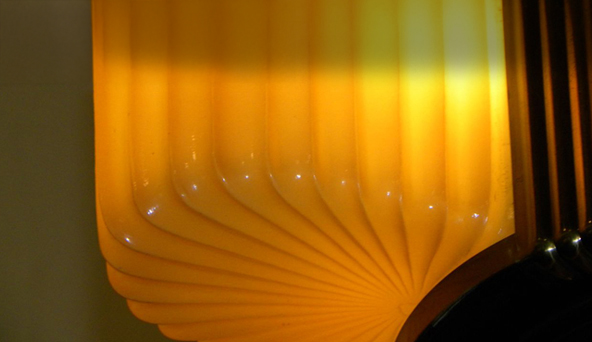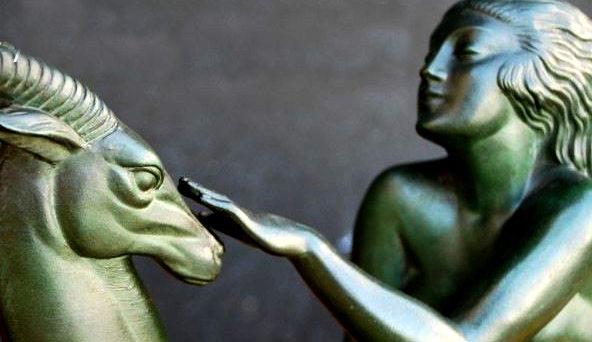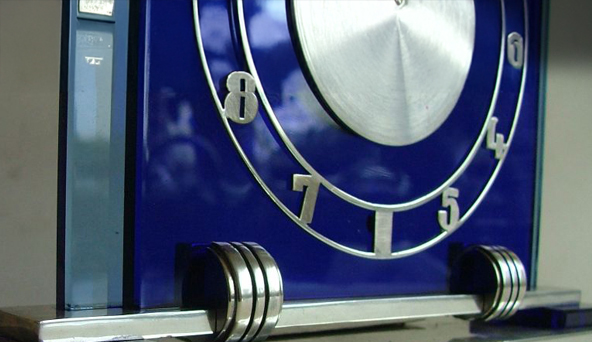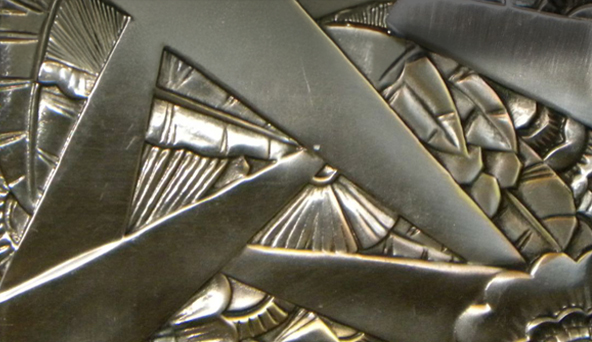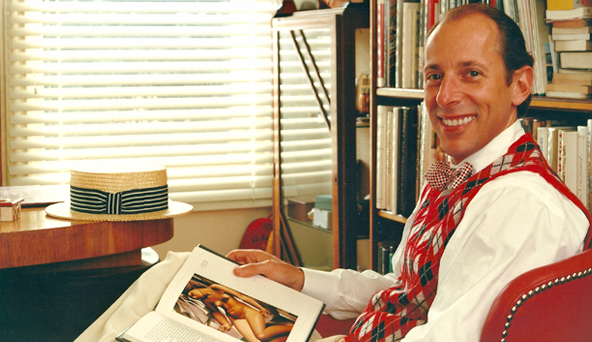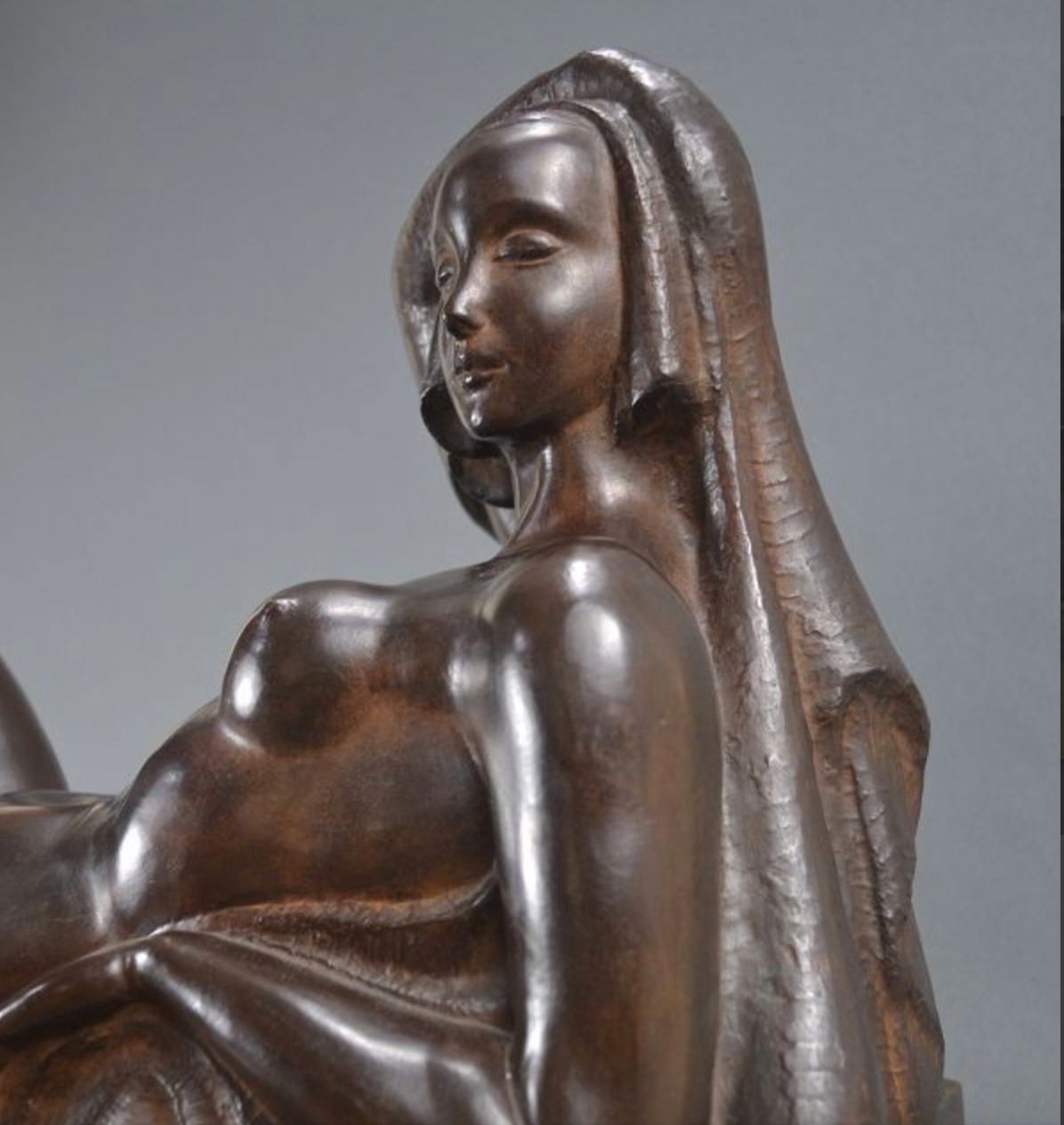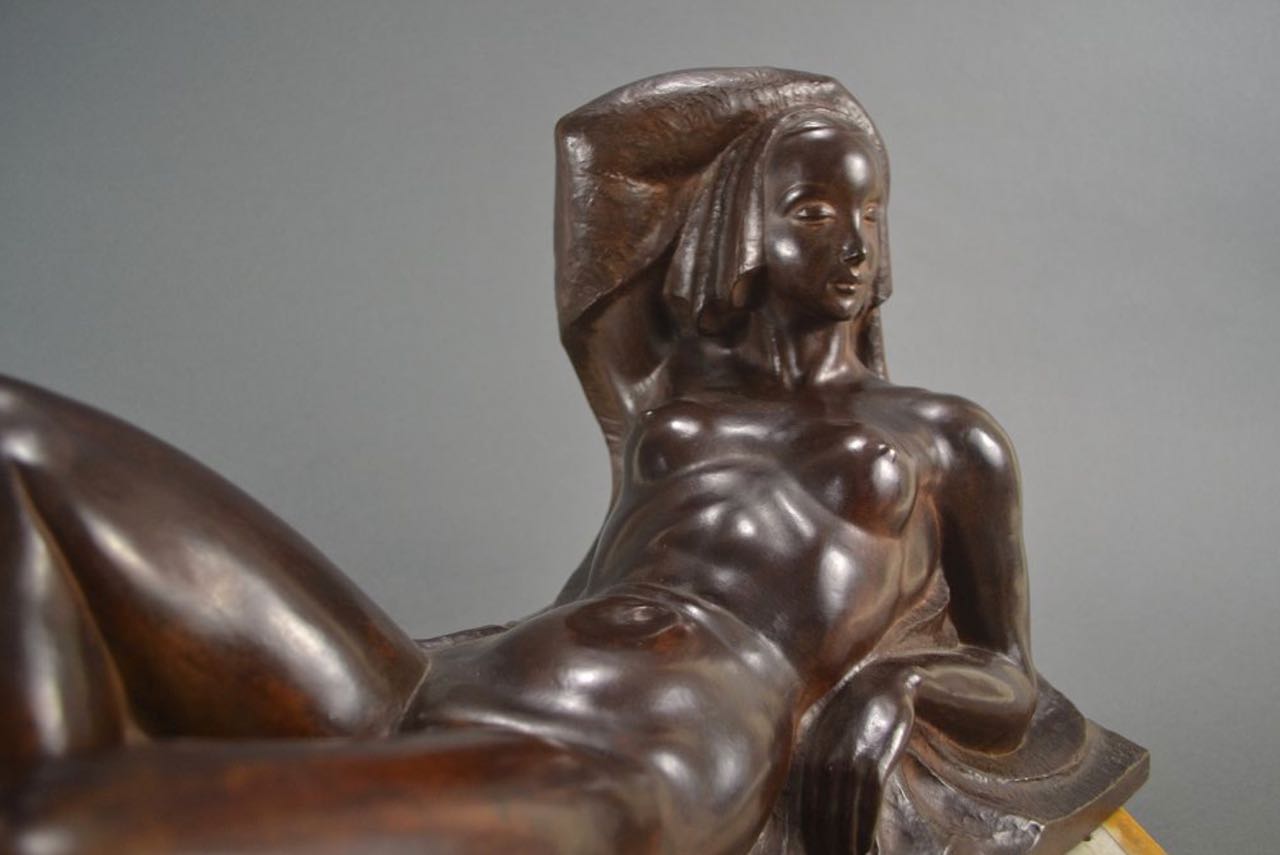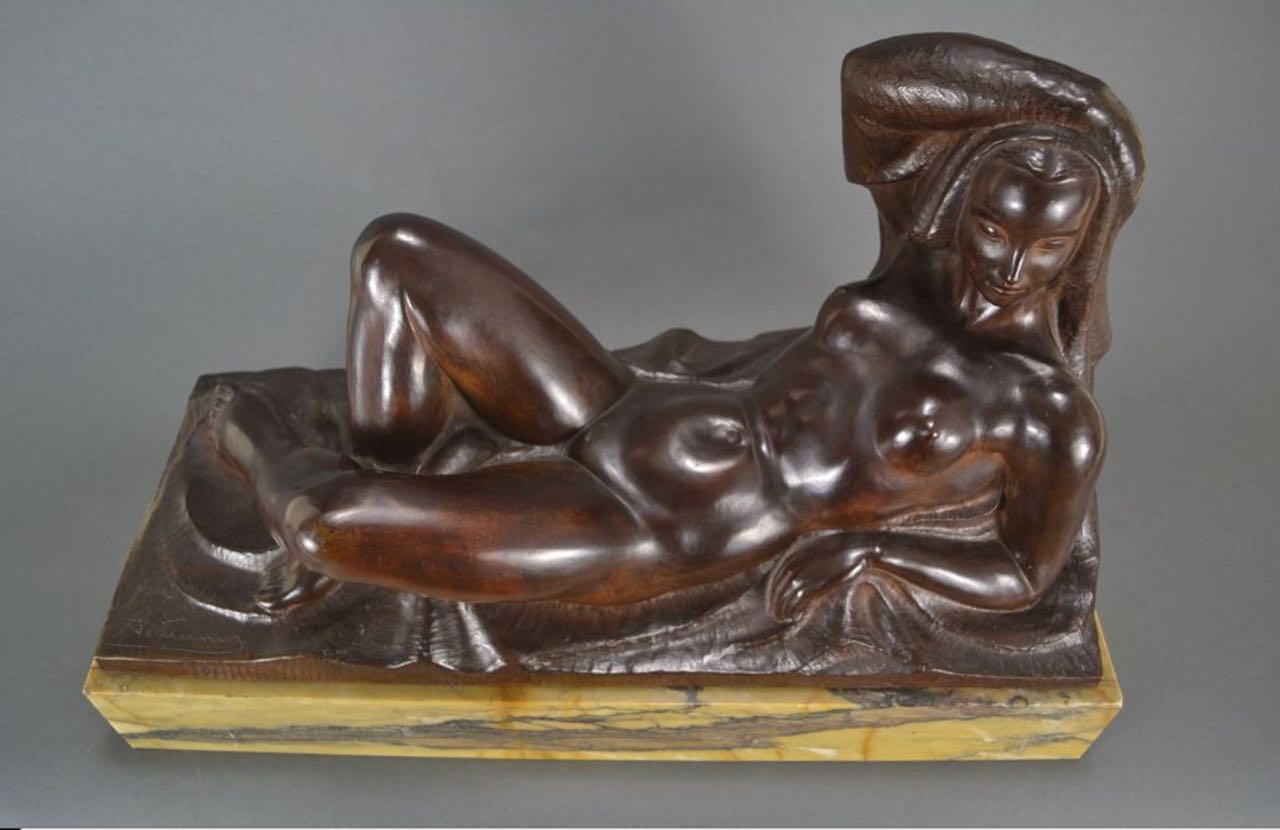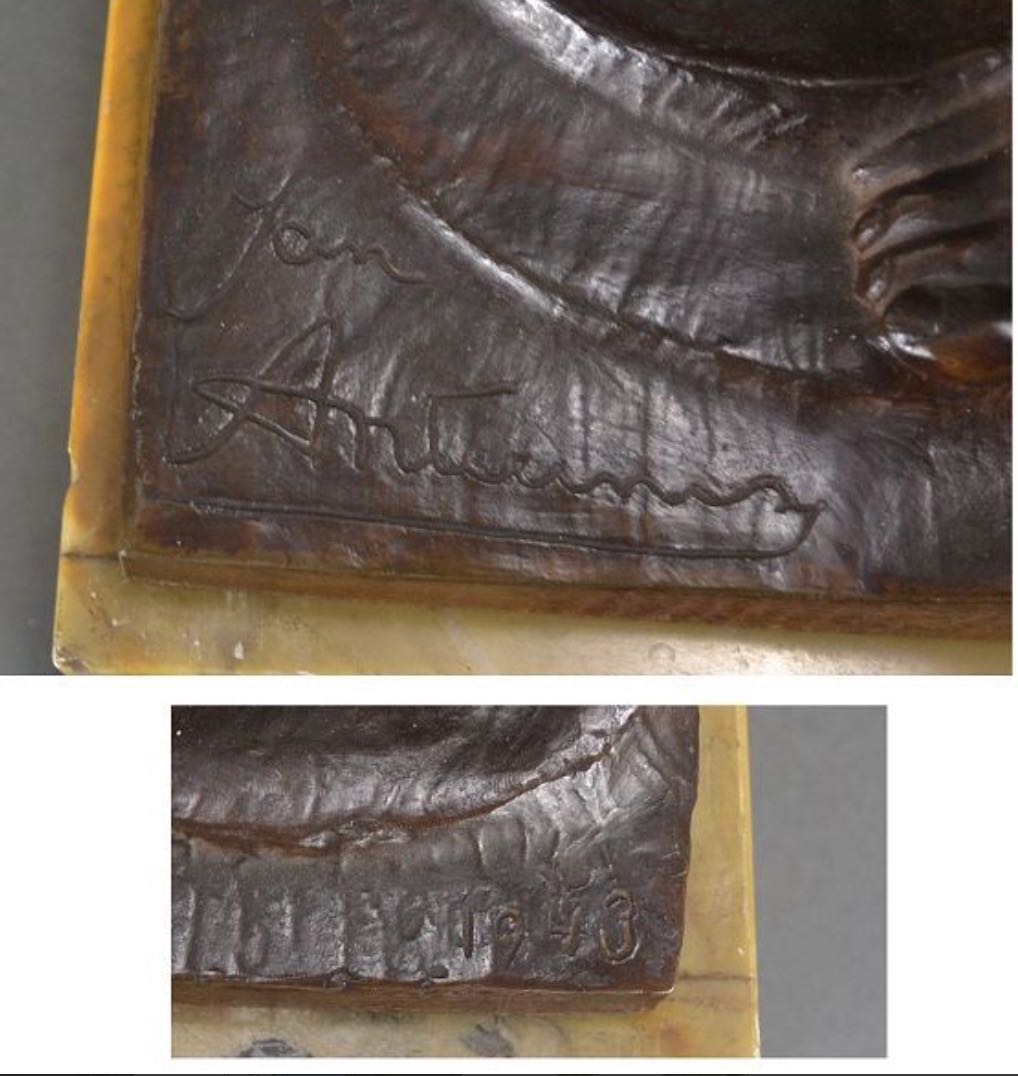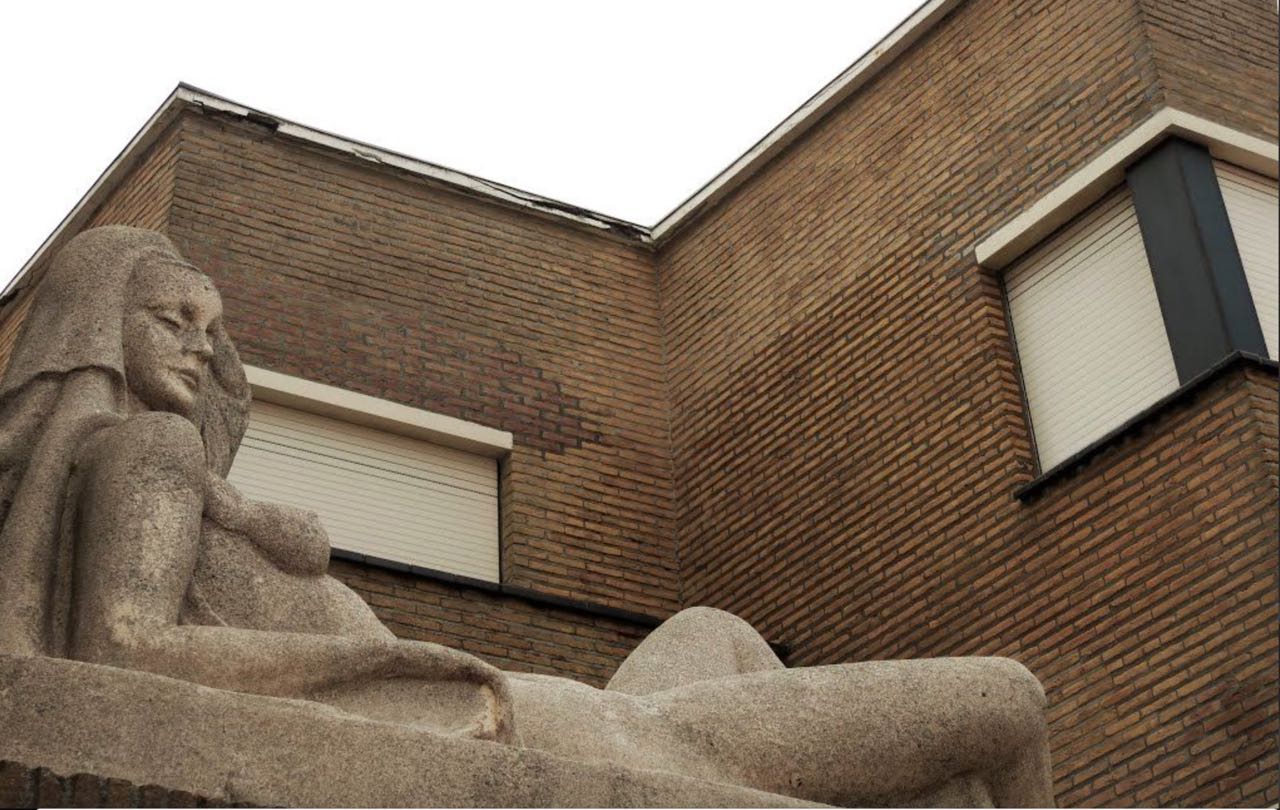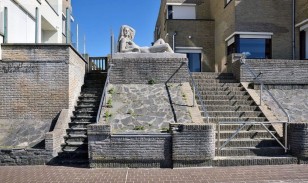Art & Statues
Art Deco Masterpiece Bronze Reclining Sculpture Important Belgian Artist JAN ANTEUNIS
A rare Art Deco Bronze. Incredible quality from an important Belgian artist named Jan Anteunis, (1896-1973). It is not often that we are able to find a piece with all of these qualities: beautiful period style, excellent proportions, amazing bronze quality. This signature piece has a look we strongly identify as an important art deco sculpture. The bronze is dated 1943, signed by the artist and sits on an original complimentary substantial and grained marble base. I love the patina on the sculpture and the relationship of her smooth body against the textured headdress which becomes part of the reclined base.
What also makes this piece so exceptional, it is completed after a unique edition from the artists original public installation of the same sculpture but in stone. It is called "Nixe". This major piece is located in place on the Zeedjijk, in De Haan, Belgium (photos enclosed). It is truly remarkable to see this major public sculpture as it compares so perfectly with the bronze edition. This is a very special piece which I can certainly see in a serious collection, museum or exhibition on Art Deco or my house!
Jan Anteunis was a Belgian artist who was born in 1896 in Ghent and died there 1973. At the outbreak of the First World War, Anteunis went to England to study sculpture at the art academy in Liverpool. Between 1918 and 1920, he went to the Academie voor Schone Kunsten (State Academy of Fine Arts) where he was apprenticed to Felix Metdepenninghen (1867-1937) and Geo Verbanck (1881-1961). From the 1920s, Anteunis was influenced by his teacher Geo Verbanck and began working in an art deco style. During this period, Anteunis sculptures became more modern.
About 1926 he began developing his more mature style which is reflected in the works “Christuskop” and “Droom”. His first solo exhibition was held in “Zaal Pan” in Ghent in 1928. In the 1930s, he began gradually achieving fame and he exhibited in various galleries in Ghent, Antwerp and Brussels. In the 1930s and 1940s, dance became an important theme in Anteunis’ work and he created stylised sculptures like “Boléro” or “Prière de Beethoven”. It was during this period, he made his most important sculptures. Besides his sculptures, he also created various drawings which were shown at numerous exhibitions. In the 1960s, he became a painter.
His sculptures can be found in the museums of Brussels, Sint-Niklaas and Roeselare.

